A 1950s Ranch in Greenway Parks is Transformed Into a Contemporary Masterwork
Architects Signe and Jason Smith and Interior Designer Wendy Konradi Work Their Magic in Dallas
BY Rebecca Sherman // 05.13.21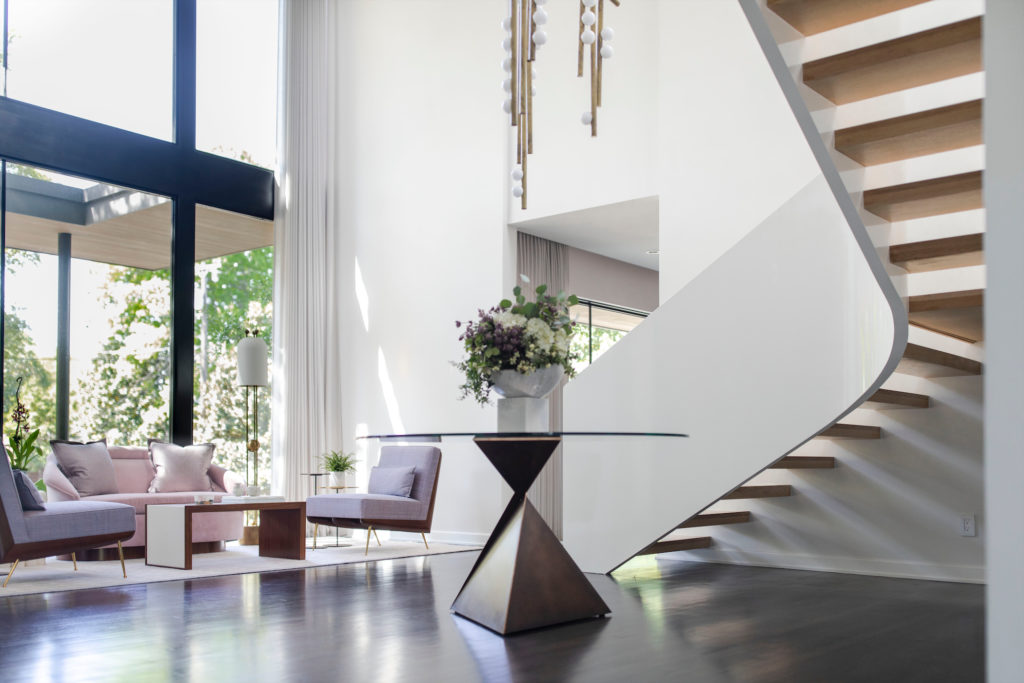
In the double-height entry, the sweeping white-lacquered staircase leads to the teenagers’ living quarters. Center table designed by Tom Faulkner, Wiltshire, England. (Photo by Addison Jones)

SmithArc Architects + Design and interior designer Wendy Konradi transformed the 1950s ranch-style home in Greenway Parks. (Photo by Addison Jones)

In the entry sitting area is a custom rug based on a 1930s Swedish rug design by Märta Måås Fjetterström. The ’60s Adrian Pearsall settee from Sputnik Modern is in mohair. Parchment-and-walnut cocktail table by Roman Thomas, NY. Floor lamp with plaster shade, Apparatus Studio. Custom silk faille slipper chair based on a mid-century design. (Photo by Addison Jones)
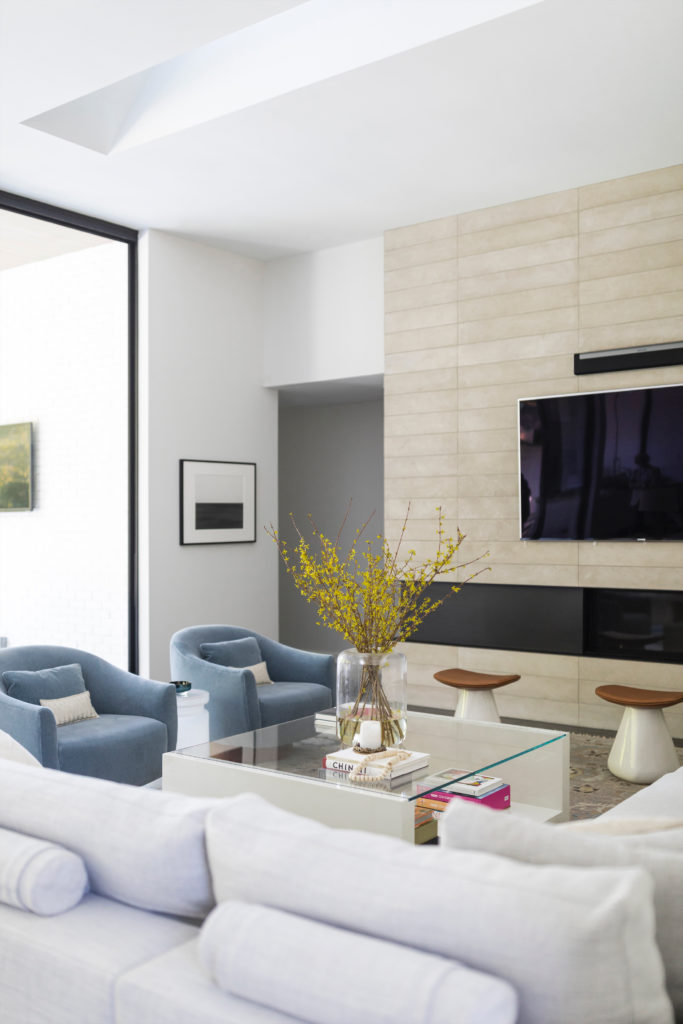
In the living area, leather-and-ceramic stools by Christophe Delcourt. Walter Knoll sofa. Hiroshi Sugimoto photograph, sourced by Anne Bruder from Marian Goodman Gallery, NY. (Photo by Addison Jones)
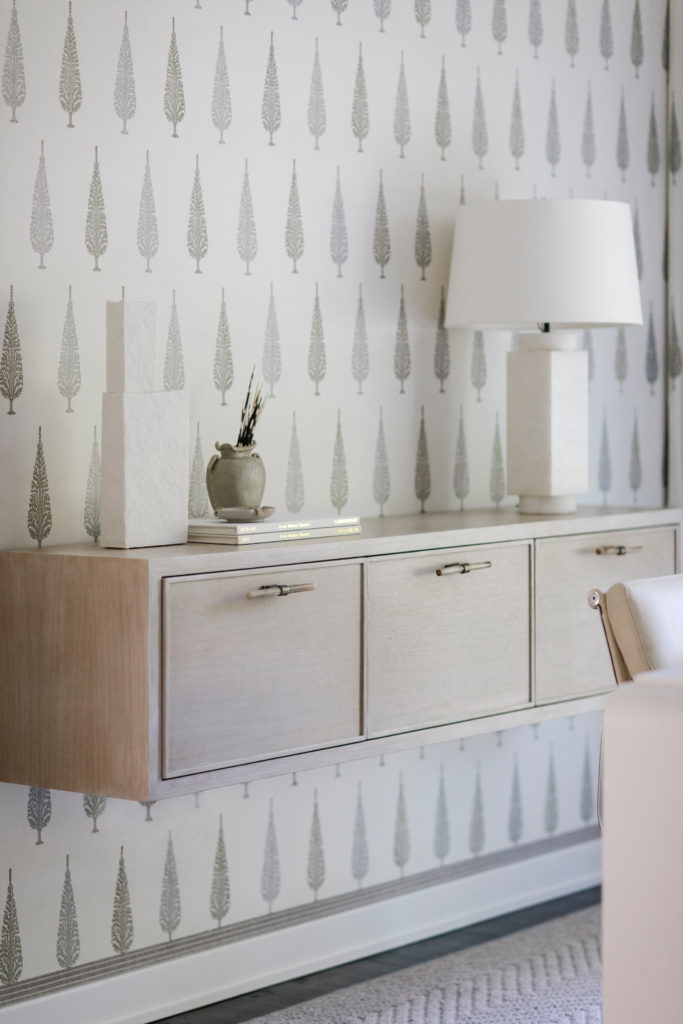
Muriel Brandolini fabric from Holland & Sherry cover the walls and windows of the wife’s study. (Photo by Addison Jones)
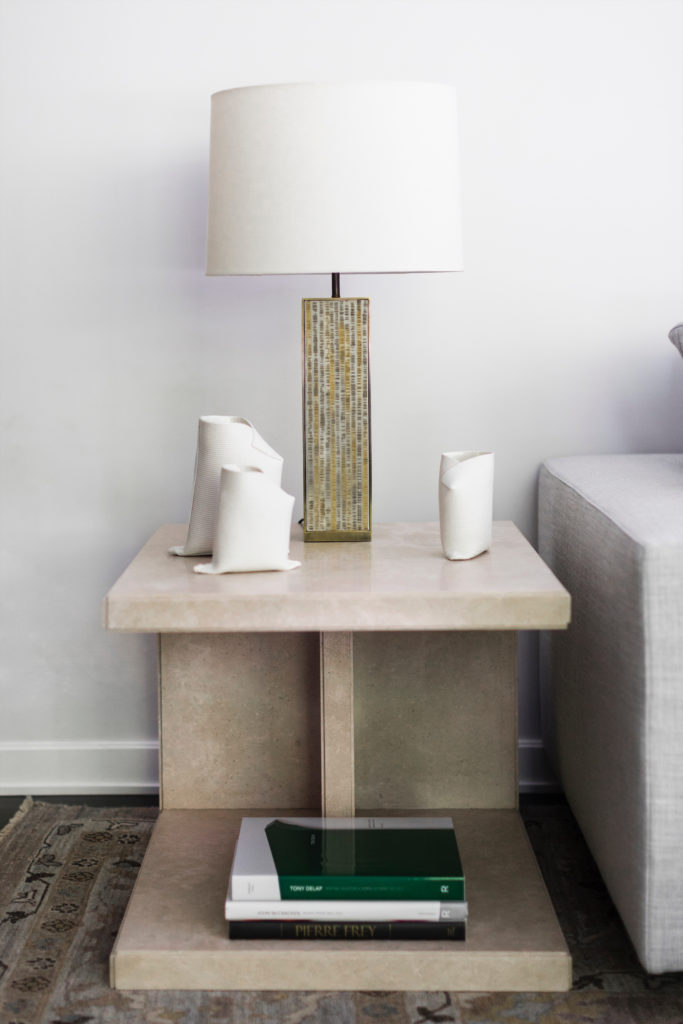
Living-room side table in honed limestone by Wendy Konradi. Embossed-parchment-and-bronze lamp by Mary Kuzma, from Emily Summers Studio. Porcelain ceramics by Fanny Laugier, from BK Antiques, NY. (Photo by Addison Jones)
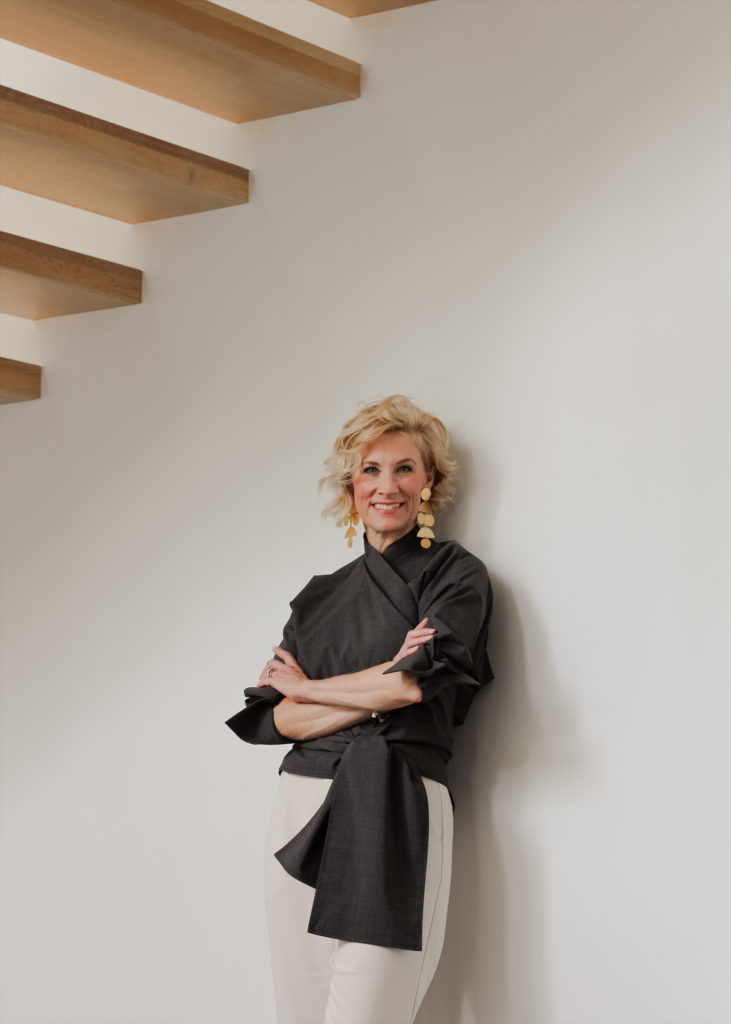
Interior designer Wendy Konradi. (Photograph Misael Rodriguez.)

In the main bedroom sitting area, chaise designed by Wendy Konradi, in Rogers & Goffigon velvet. Limestone-and-lacquer side table by Luca Nichetto, from The Future Perfect. Italian slipper chairs, ’60s era. (Photo by Addison Jones)
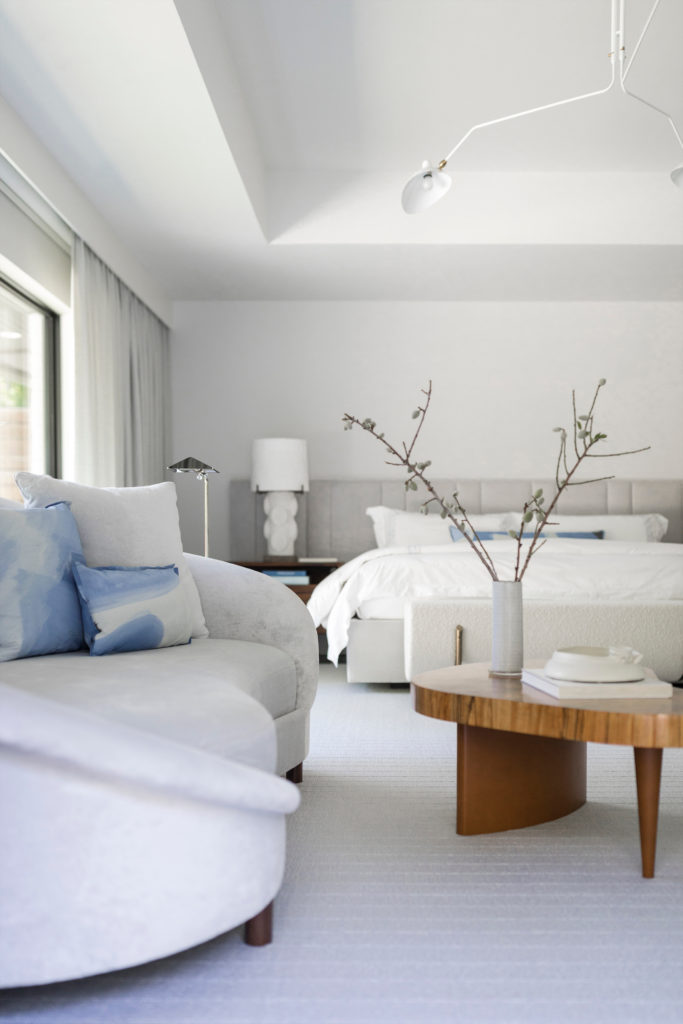
Rosewood-and-leather table by Gilbert Rohde, ’40s era, from Collage 20th Century Classics. Muse Bespoke bedding. Bed designed by Wendy Konradi in Rogers & Goffigon velvet. (Photo by Addison Jones)
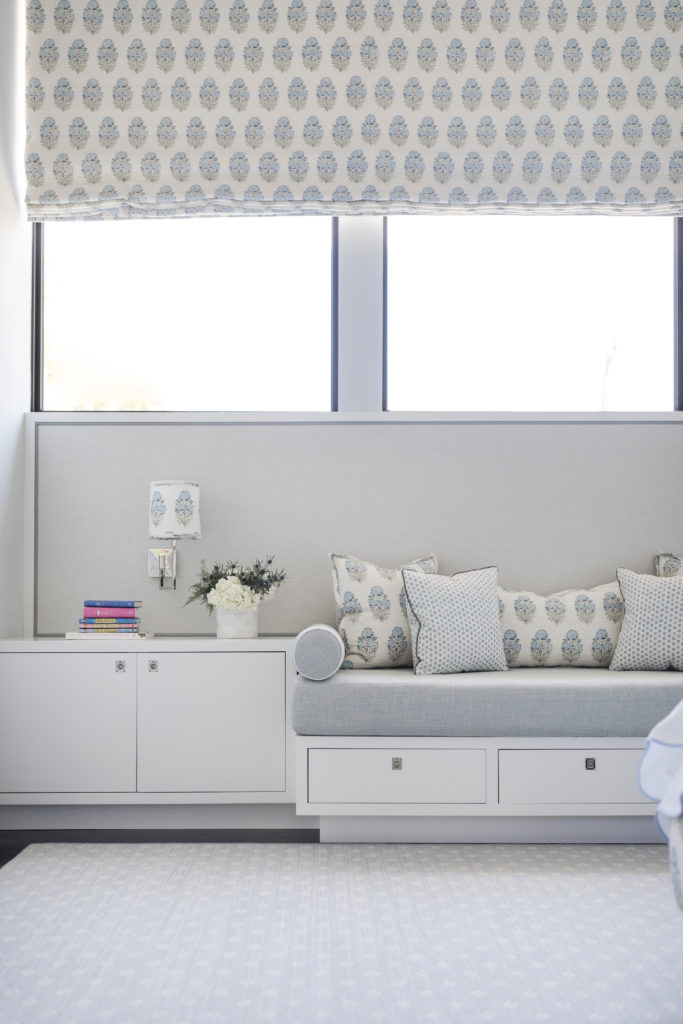
In the daughter’s bedroom, shades and pillows in Lisa Fine textiles. Built-in daybed and tables designed by Wendy Konradi. Magnetized linen wallpaper becomes a bulletin board for mementos. (Photo by Addison Jones)

Chandelier designed by Lindsey Adelman. (Photo by Addison Jones)
You’d never know that this airy, sun-drenched house in Greenway Parks started out life in the 1950s as a small one-story ranch. Purchased in 2014 by a couple with two teenagers, the formerly unremarkable house has been transformed into a splendid family home by SmithArc Architects + Design and interior designer Wendy Konradi. Architects Signe and Jason Smith added a second floor for the teens’ living quarters, and downstairs opened the space with a voluminous double-height room that envelopes the living, dining, and kitchen areas, along with a two-story wall of glass that floods the interiors with sunlight. A graceful, curved staircase in the entry creates a sense of arrival. The interiors are elegant, restrained, and filled with noteworthy furnishings.
“The wife has a very sophisticated eye. She likes things very clean, edited, and crisp,” says Konradi, an Austin native who worked with designers Naomi Leff in New York City and Emily Summers in Dallas before opening her own firm in 2010. She quickly established a reputation for crafting modern interiors with historic references, and for advising clients in building collections. She came on board this project after renovations were complete. “It was a blank slate,” she says. “We built color palettes around some of the existing rugs the owners had, but almost everything was purchased or designed for this house.”
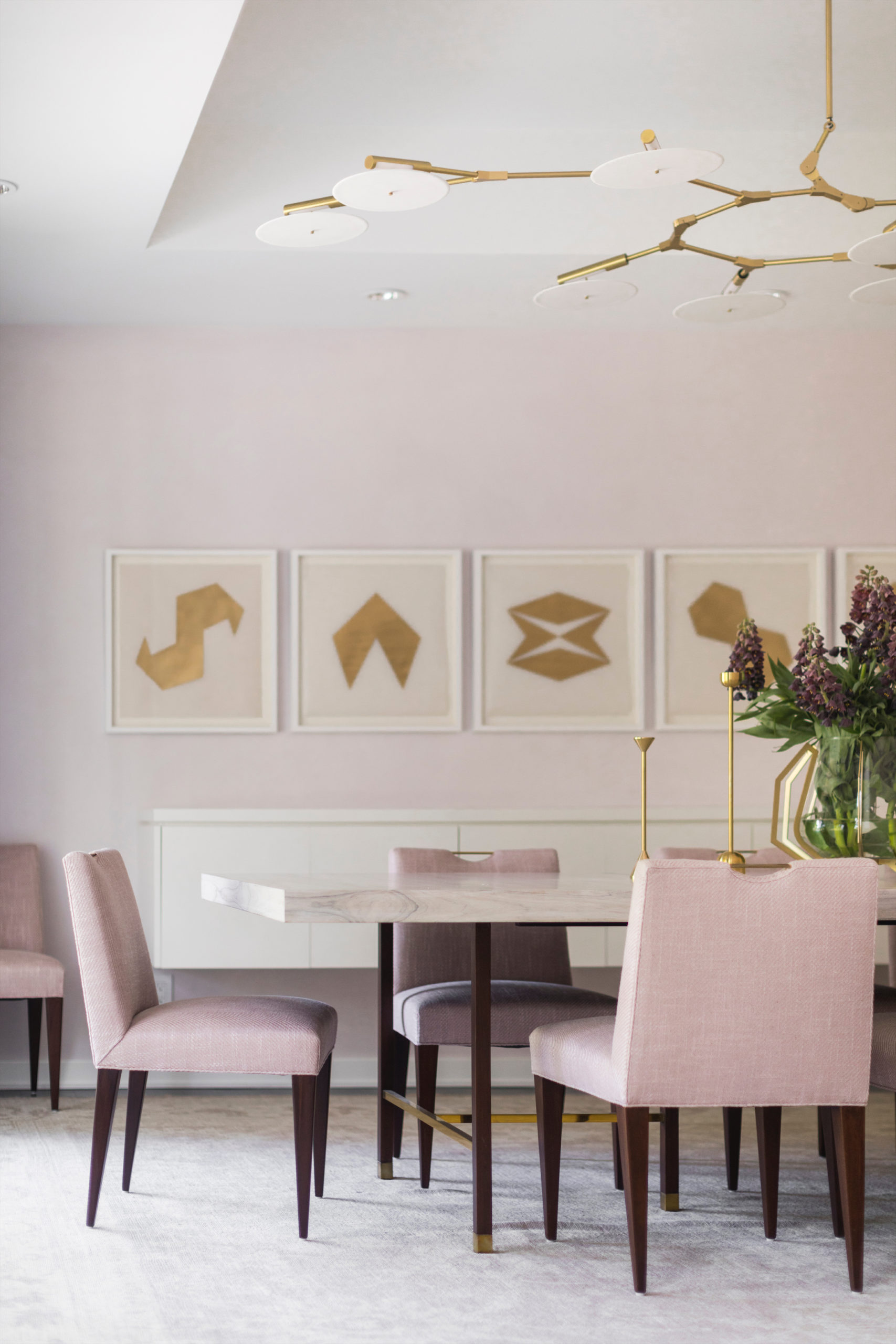
On a trip to New York with the homeowners, Konradi introduced them to her favorite sources to get an idea wha they responded to. Lighting and glass artist Lindsey Adelman’s studio was a big hit, and they commissioned two chandeliers including a 96-inch one with multiple tiers, customized with 64 blown-glass bulbs. “It’s large and sculptural next to the sweeping staircase that you can enjoy all the way up to the second level,” Konradi says. They also visited Cocobolo, a gallery that specializes in contemporary ceramic art and design. “I learned that we have a mutual love of ceramics, and we looked for pieces they could collect over time,” she adds. They selected a ceramic side table by artist Benjamin Wiener for the seating area in the entry, one of their first purchases for a burgeoning collection that includes works by mid-20th-century Swedish ceramicist Gunnar Nylund and 1930s Danish sculptor Arne Bang.
With an understanding of her clients’ tastes, Konradi also purchased fine vintage furnishings at auction and from local galleries. In New York, she acquired a pair of polished bronze and rosewood night tables handcrafted by KGBL, along with a parchment-and-walnut table bench-made by Roman Thomas. The bronze center table in the entry was designed and created by Tom Faulkner, who handcrafts all of his furniture in his Wiltshire, England, workshop. High-quality new pieces such as these will hold their value over time and are the collectibles of the future. “In 20 years, these will be the works coming up for auction,” she says. Also, “vintage pieces with provenance will accrue in value, and it’s more interesting in a modern space to have history or roughness, so that everything doesn’t feel brand new.”

Many of the collectible mid-20th-century furnishings she purchased for the house — such as a diminutive Adrian Pearsall settee, a sleek Harvey Probber bleached-rosewood dining table, and an exquisite ‘40s rosewood and leather cocktail table by Gilbert Rohde — were sourced locally from Sputnik Modern and Collage 20th Century Classics, both respected internationally for their superb selections. Konradi also designed custom furnishings with historical references, including a rug for the seating area in the entry, inspired by a 1930s rug design by well-known Swedish textile artist Märta Måås-Fjetterström. “I want my clients to have things no one else will have, that are special and unique to their home,” Konradi says. “I like it to feel more curated than overly designed.”
Konradi is a master of materials, and here she’s used texture and matte finishes to soften and contrast the contemporary architecture. The sitting area in the voluminous entry is made to feel cozy and welcoming with a mix of upholstery in lilac mohair and blue-gray silk faille, along with furniture made in ceramic, leather, and walnut. Even the shade for the floor lamp is handcrafted in ribbed porcelain. In the adjacent dining room, walls are plastered in a pale lilac hue that gives the space intimacy and subtle textural interest. In the wife’s study, walls and windows are cocooned in Muriel Brandolini’s tonal hand-blocked Indian cotton fabric edged with contrasting linen tape. Banana-fiber window shades create a delicate scrim and reference a sculptural banana fiber lighting pendant Konradi purchased in London in a store on Pimlico Road. “A lot of detail and layering went into this room, but it still feels so quiet,” she says.
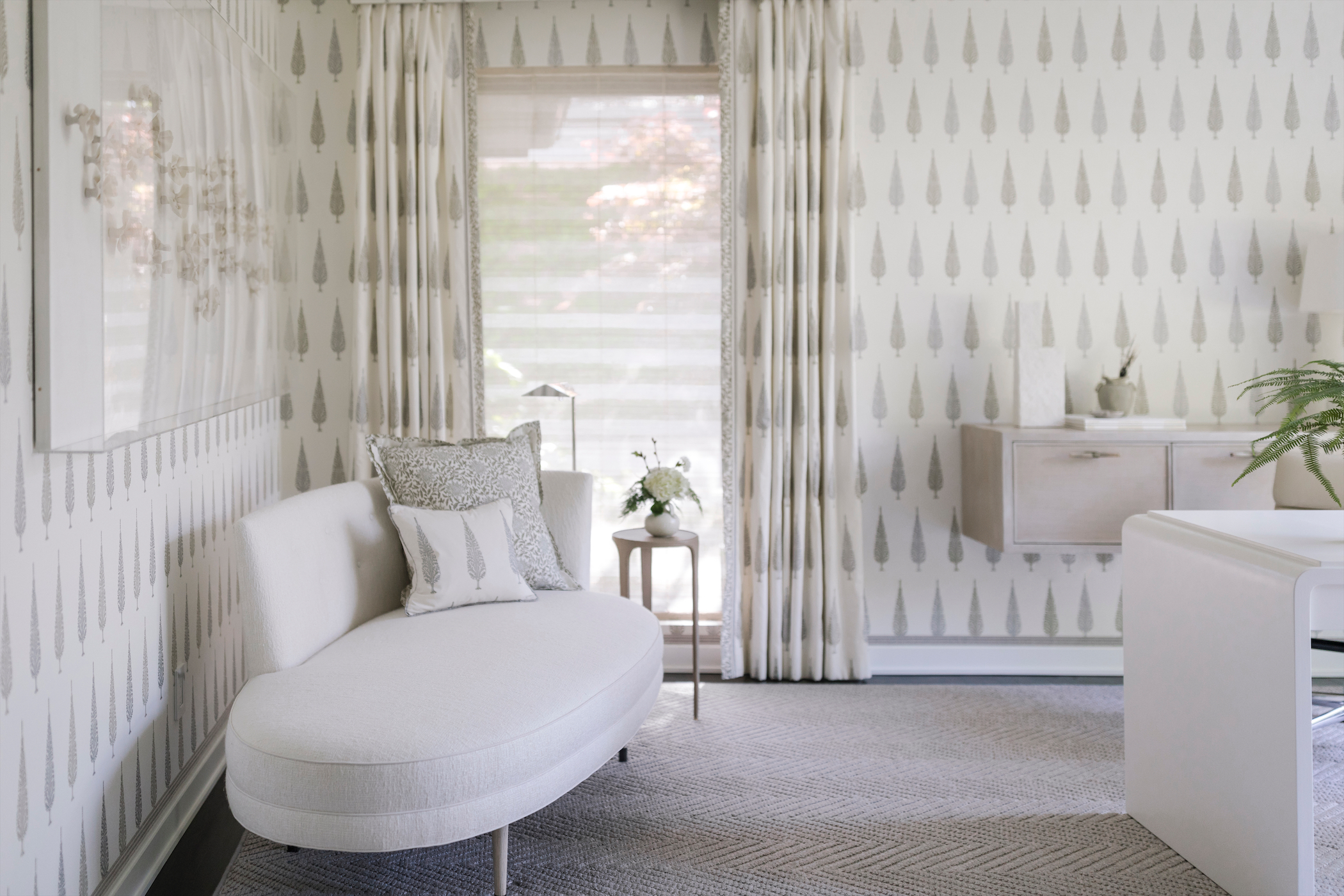
The couple’s bedroom is enveloped in sumptuous blue-gray Rogers & Goffigon fabrics. Konradi found the plaster bedside lamps with unusual plaster shades at one of her favorite sources in L.A. for one-of-a-kind artisan accessories, Blackman Cruz. In the bedroom seating area, a side table made from limestone and lacquer by Italian artist Luca Nichetto combines cylindrical and conical shapes and is as much sculpture as it is functional. The bedroom’s rosewood furniture is not a set, but a suite of compatible vintage and newly made pieces, such as the contemporary KGBL rosewood and polished bronze nightstands and a 1940s Gilbert Rohde rosewood-and-leather coffee table.
“They create a nice conversation between each other in the room without matching,” she says. “And, they’re pieces my clients can keep and pass down. It was about filling the space in a very thoughtful way.”
















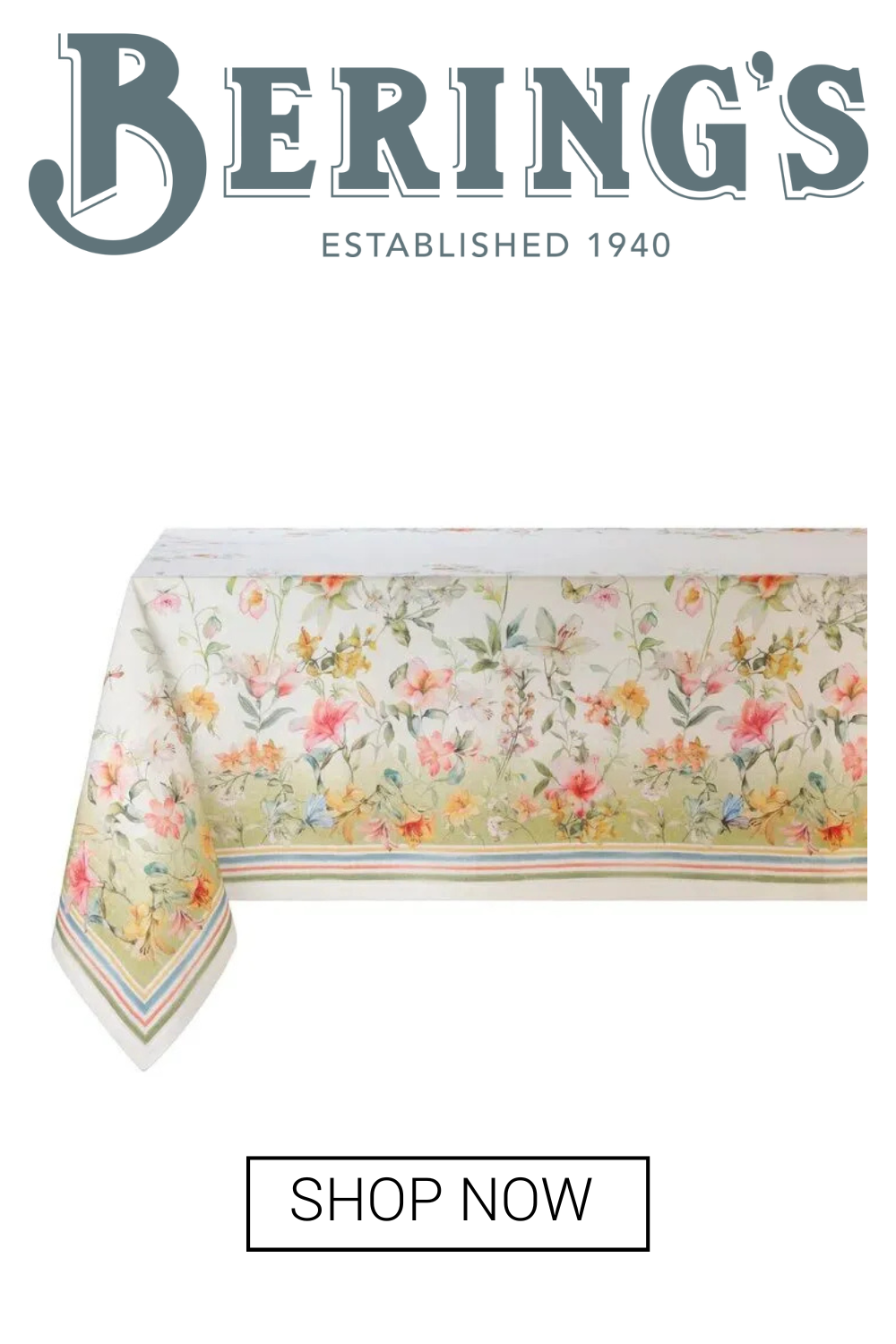











_md.jpg)
















_md.jpg)






_md.jpg)



_md.jpg)


_md.jpg)


_md.jpg)




_md.jpg)









